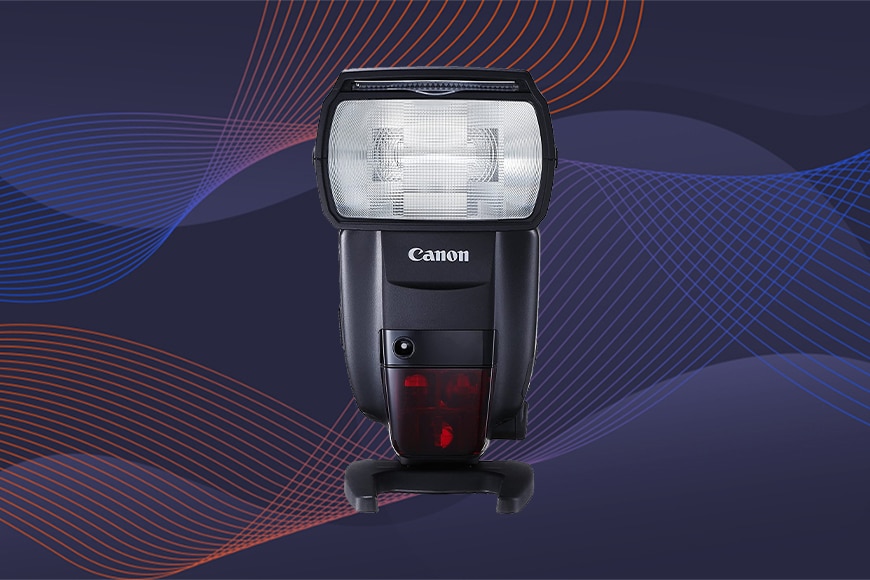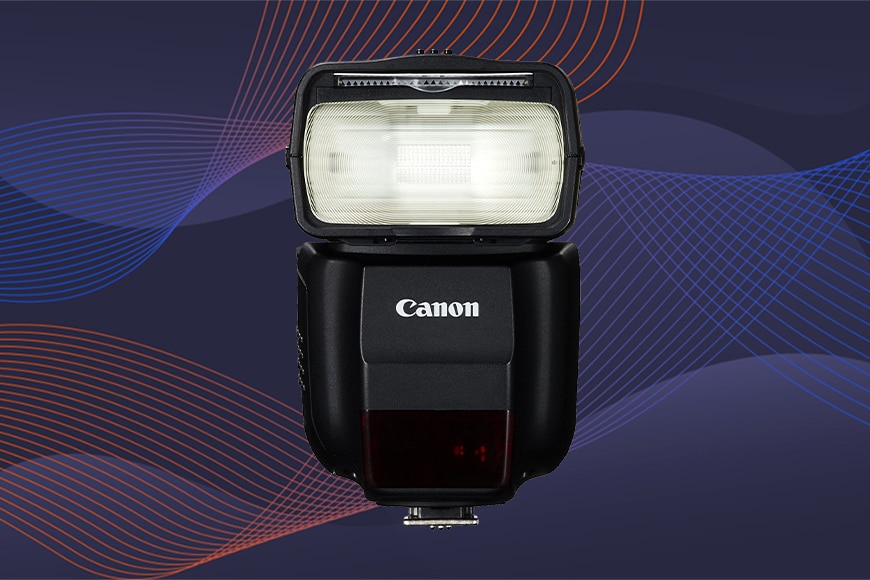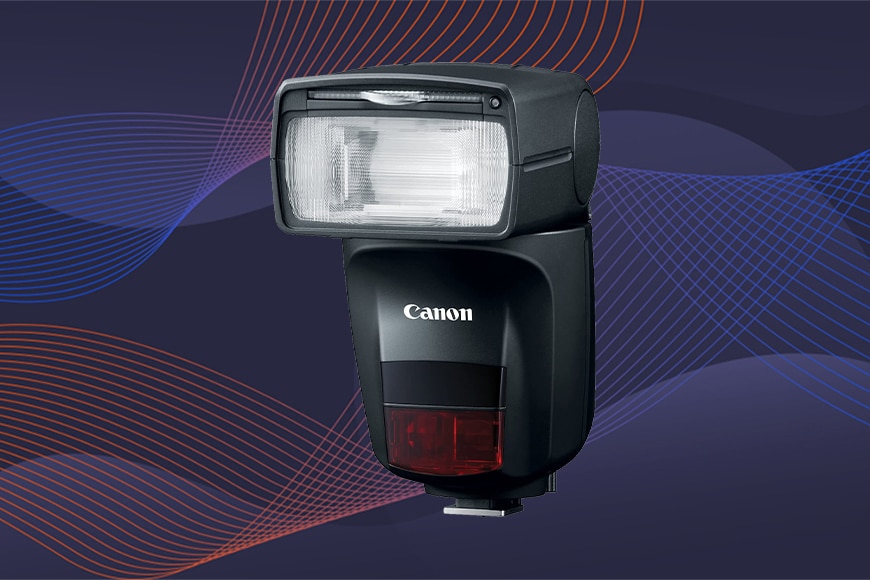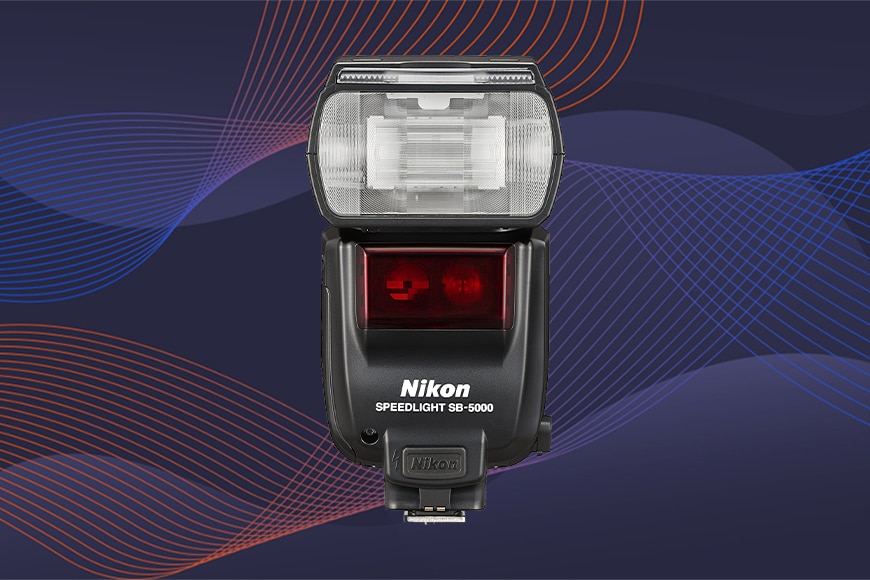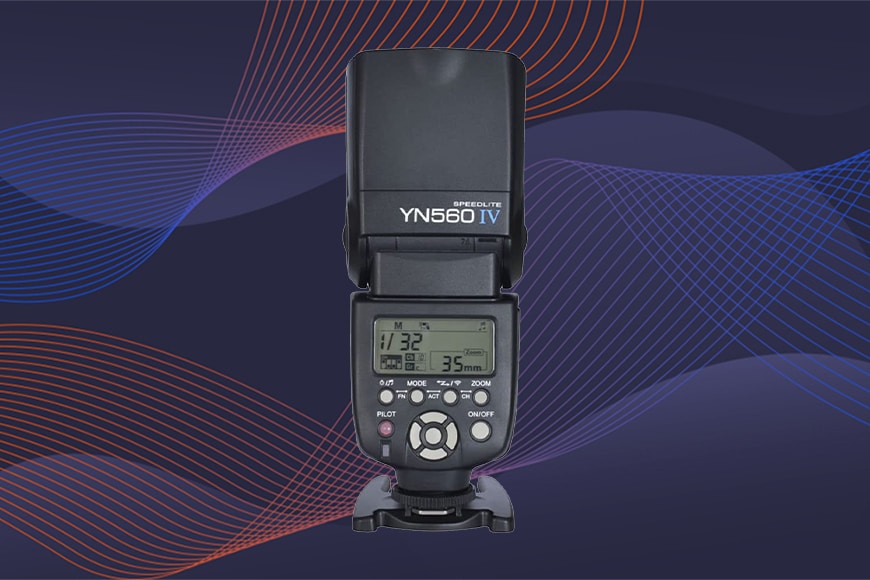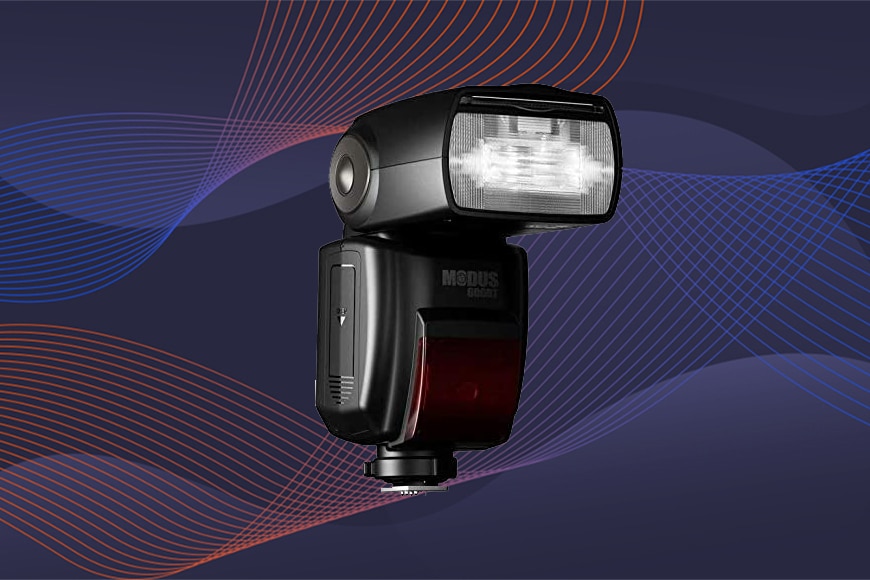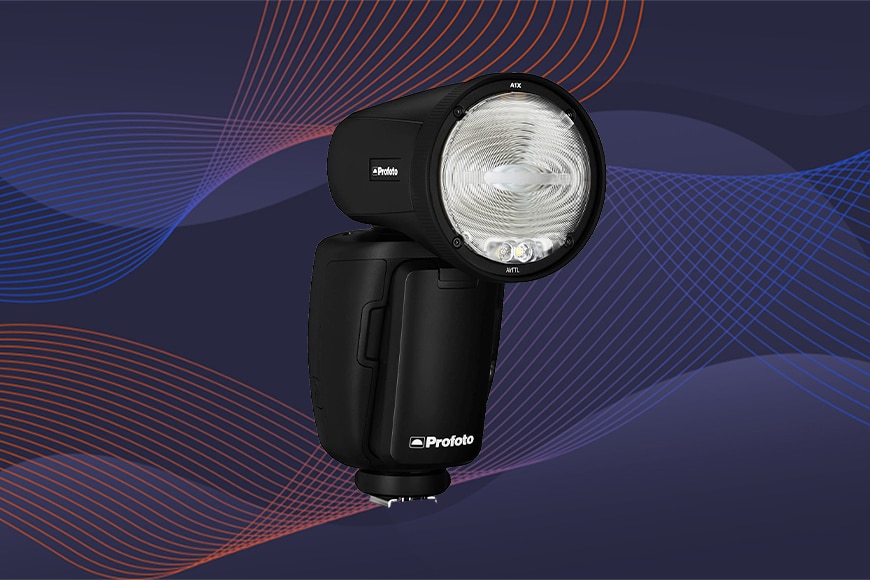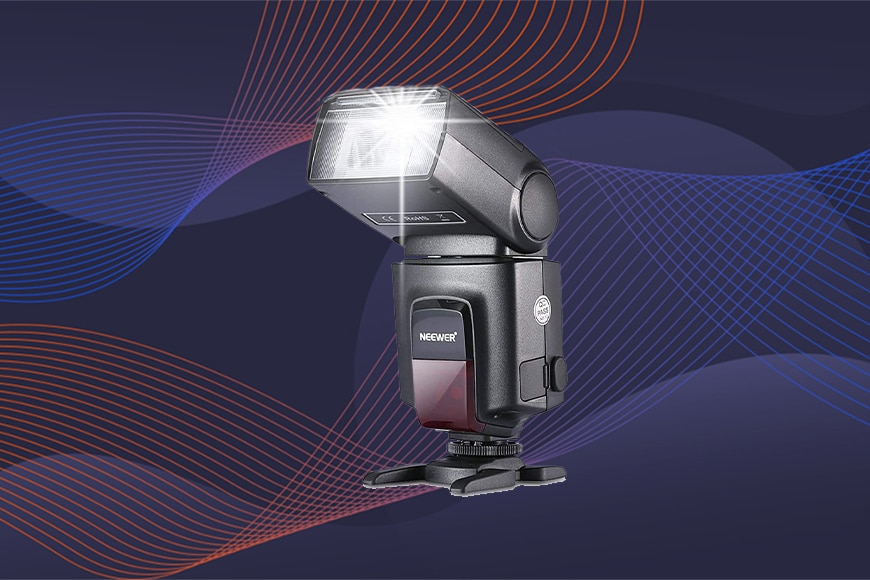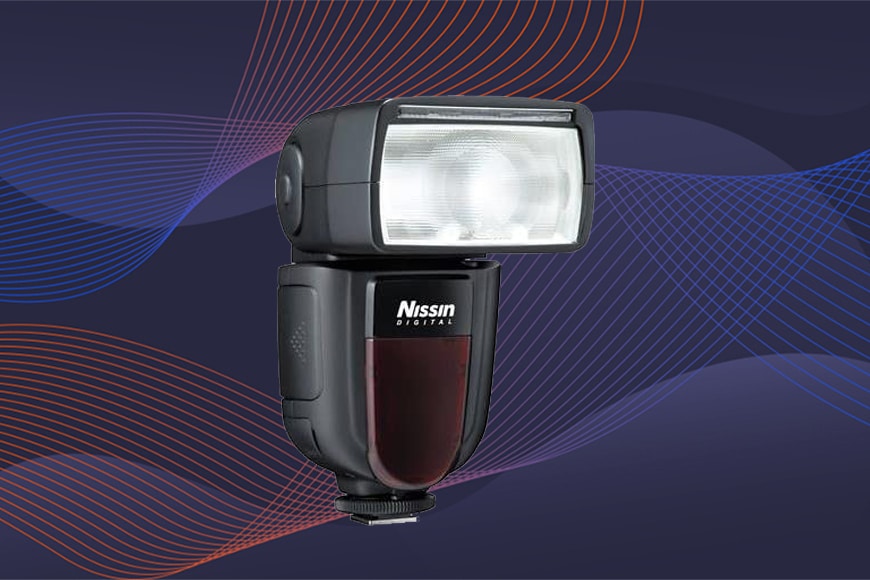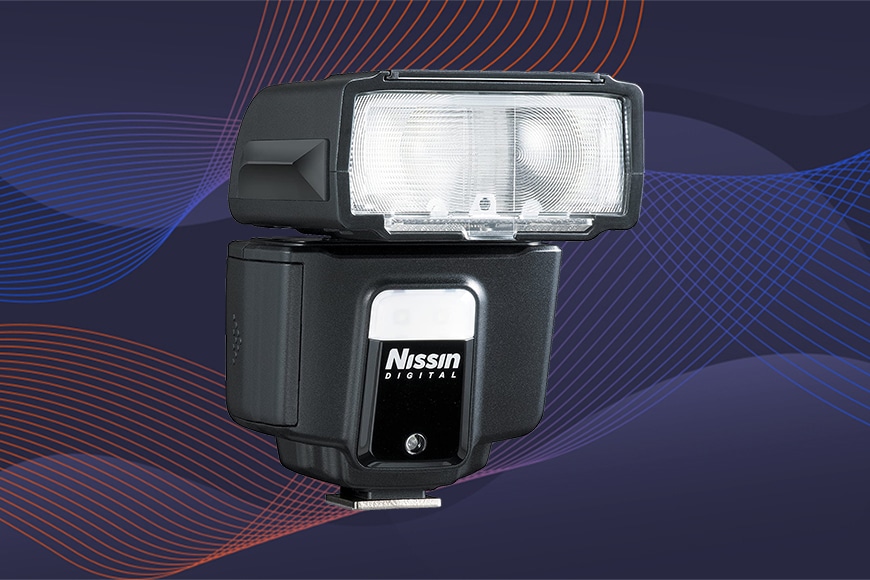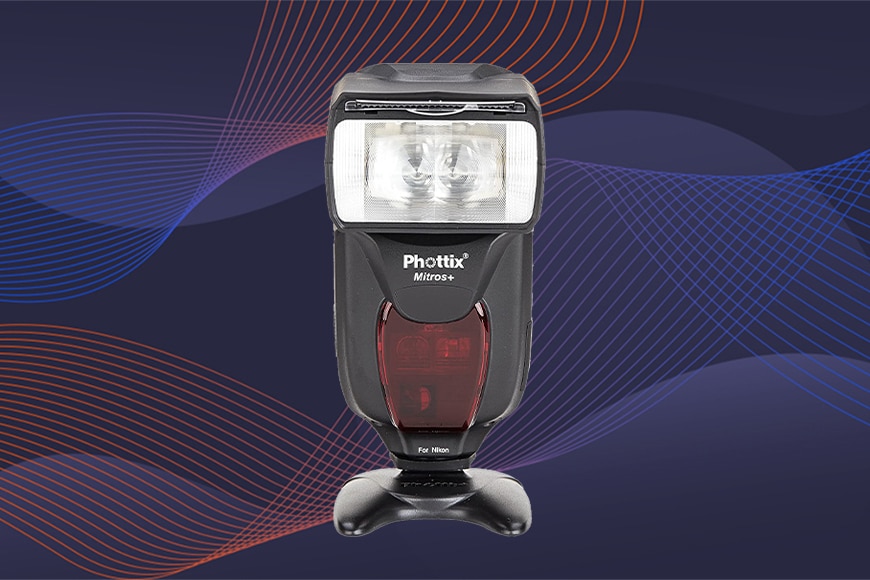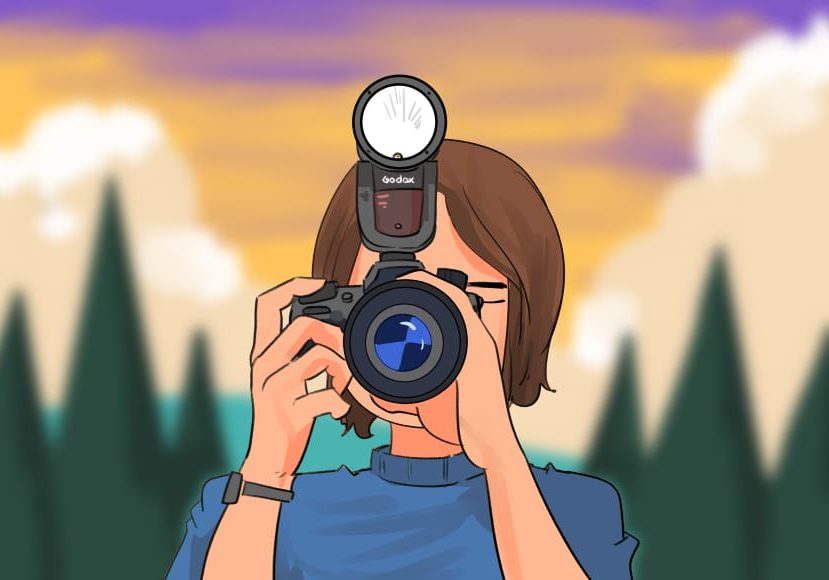
Best Detachable Camera Flash (Speedlight) for Canon, Nikon & More
Time to upgrade your built-in camera flash? This guide to the best detachable camera flashes of the year will help! (Includes some great budget Speedlites too!)
This is a guide to the best camera flash for on-camera use in 2023 – most models can also be used off-camera too.
Upgrading your camera’s tiny pop-up flash is well worth it: detachable camera flashes give you much more power and lighting control.
Most camera manufacturers offer own-brand flash units, but we’ll also be recommending 3rd party camera flashes – ones that are compatible with Canon, Nikon, Sony, Fujifilm and other camera bodies.

Excellent build quality, fast recyle times and powerful output - excellent value flash for on and off-camera use.
Brands like Yongnuo, Godox and Neewer allow beginners to get an affordable flash speedlite for a fraction of the cost of the ‘big-name’ models.
(The budget options also provide an affordable way to experiment with complex multiple off-camera flash setups.)
Whether you’ve got a DSLR, mirrorless or compact camera, as long as you have a hot-shoe, you’re ready to start some flash photography.
So let’s dive into the recommendations!
Table of Contents
Best Camera Flash for Canon Cameras
Canon Speedlite 600 EX II-RT
- HSS
- Slow Sync
- Fast recycling
- Zoom Head (20-200 mm)
- High price
The Canon Speedlite 600EX II RT is a top-shelf flash unit that allows for great flexibility. You can use it in manual mode or TTL with 1/3 stops for maximum precision. The recycling time ranges from 0.1 to 5.5 sec.
The autozoom feature on the Canon 600EX II RT means the head can automatically detect the focal length of your lens (20-200mm) and adjust the size of the light beam to match the field of view.
For full versatility, this flash has high-speed sync (HSS) to surpass your camera’s native sync if you need to work with faster shutter speeds. On the other hand, it has second-curtain flash sync to use in long exposure photography.
Overall, this flash is a well-rounded piece of equipment that’s ideal for professional wedding, portrait and event photographers.
Canon Speedlite 430 EX III-RT
- Zoom head (24-105 mm)
- Master / Slave unit
- HSS
- Slow Sync
- Not dust / water resistant
The Canon Speedlite 430EX III RT is a mid-level flash unit that allows you to have most of the features from the best camera flash models, although some of the features are more limited.
It has an autozoom for sensor size that ranges from 24 to 105 mm. It can be used as a master unit or as a slave, but you need to be aware that it functions differently in each mode.
(For example, it doesn’t support a multi-flash function unless it’s working as a slave unit from the main flash that has this feature.)
The 430EX III RT has high-speed sync and slow sync so that you can use it with a wide range of shutter speeds for a wide range of creative effects.
Great for high volume photographers – the 430EX III RT has a short recycling time that ranges from 0.1 to 3.5 seconds and can be used in manual mode or TTL.
Canon Speedlite 470EX-AI
- AI Bounce
- HSS
- Slow Sync
- Zoom Head (24-105 mm)
- No radio wireless communication
- Compatibility problems with older cameras
This is the first camera flash that uses artificial intelligence to calculate the best angle to bounce the light before automatically positioning the head in that direction – whether you’re shooting in portrait or landscape format.
This feature is mostly used for indoor portraits or events, so this flash is built with on-camera use in mind.
This means that you won’t get radio wireless communication – it’s still possible to use it off-camera but only with line-of-sight communication with optical wireless.
It does come with HSS and second-curtain sync. It also has an autozoom for sensor size from 24 to 105 mm.
All in all, it has all the features from other mid-level units but lacks the pro features of the best camera flash models on this list.
The main question you need to ask yourself before buying this model instead of others, such as the Speedlite 430 EX III-RT, is whether you plan to use it mostly on-camera or off-camera.
If the answer is on-camera, then this might be the one for you, especially if you value the addition of AI to handle your flash bouncing.
Best Camera Flash for Nikon Cameras
Nikon Speedlight SB-700
- Automatic WB when using color filters
- Zoom Head (24-120 mm)
- i-TTL
- Incompatible with older cameras
This is a mid-level unit for newer Nikon cameras as it’s only compatible with Nikon’s Creative Lighting System.
If you’re an indoor photographer, you’ll benefit from the SB-700‘s automatic white balance. When you attach the incandescent or fluorescent filters (included in the package), the flash recognizes them and sends the data to the camera to adjust the WB.
The i-TTL system improves the control for zoom and exposure to deliver the perfect amount of light in every shot.
You can choose the settings to consider only the subject’s lighting or use it as a fill-flash that considers the background as well.
This flash speedlite also supports high-speed sync, low sync, red-eye reduction, rear sync, and other flash options for full versatility.
Dialling in zoom and power settings is simple and fast with a clear guide number reference, ensuring you won’t miss your next shot.
Nikon Speedlight SB-5000
- Built-in cooling system
- Autozoom 24-200 mm
- i-TTL
- Multiple sync modes
- High price
This is Nikon’s flagship flash unit. It has optical and radio wireless control to work with multiple units in complicated portrait lighting setups, even in different rooms.
Thanks to its cooling system, you can fire up to 100 consecutive shots at full power without heating problems. This, of course, pairs with its recycling time of 1.8 – 2.6 seconds.
Like the other best camera flashes produced by Nikon for pro photographers, the SB-5000 has automatic white balance when used with its incandescent and fluorescent filters.
It can be used in multiple sync modes such as first and second curtain sync, HHS and slow sync, and adjusts its zoom length depending on the focal length of your lens.
If you’re a professional photographer and you can afford to invest in a potent and reliable Speedlight, this flash is the way to go. Just prepare for the steep price tag!
Best 3d Party Camera Flash (Canon, Nikon, Sony, etc.)
Godox V1
- Round head
- HSS
- Rechargeable battery
- Best value for money
- Accessories and transmitter sold separately
Thanks to its circular design, the light pattern from this Godox camera flash is more similar to one from a monolight – although it’s not as powerful, of course.
It comes with a modelling lamp for you to adjust the lighting setup with a real view of the changes you’re making with every move.
You can use it on-camera or off-camera. Keep in mind that you’ll need a wireless transmitter to use it off-camera – this is sold separately, and surprisingly affordable too. With it, you can control up to five groups of light.
Both the Godox V1 flash unit and the transmitter need to match your camera, so make sure you buy the right one. There’s one for all the major brands such as Sony, Canon and Nikon.
Also, as an optional extra, there’s an accessory kit with a diffuser dome, barn doors, snoot, gels, grid and a reflector card at a very reasonable price.
The zoom range is 20 to 105mm and it has a recharging time of 1.5 seconds. You can use it in high-speed sync with a maximum of 1/8000 shutter speed. It also offers front and rear curtain sync.
Unlike most detachable flashes, this one uses a rechargeable battery, so you don’t have to fuss around with AA batteries any more.
If you think that would limit your photoshoot time, don’t worry – it lasts up to 480 flashes at full power. If you need more than that, you can always get an extra battery.
The Godox V1 is the best camera flash produced by a 3rd party brand of its kind that works for any type of photography, and it’s also highly practical for travel.
It’s perfect for entry to mid-level photographers because it gives you room to grow, and it offers great value for money, allowing you to purchase several for more complex off-camera flash control.
Yongnuo YN-560 IV
- Zoom 24 – 105mm
- Second curtain sync
- Universal compatibility
- Low Price
- No HSS
The Yongnuo YN560 IV is a universal manual flash compatible with all the main camera manufacturers.
Unlike other brands, you don’t need to buy a different model Yongnuo flash each camera brand thanks to its 1-pin foot plate – this comes in handy if you have multiple cameras or plan to change in the near future.
If you want to use it off-camera, you’ll need a transmitter that’s sold separately – much like the Godox brand, Yongnuo’s accessories are refreshingly affordable.
Its settings are fully manual and can be adjusted in 1/3 stop intervals. The zoom is also manual and has a range from 24mm to 105 mm.
The YN-560 IV works as a master or a slave unit with radio wireless technology up to 100 meters, but it doesn’t have optical wireless.
Although you can’t use it in high-speed sync, it does support second curtain sync and stroboscopic flash.
The best feature of this camera flash is its price – even beginner photographers can afford to buy a couple, with one kept as backup or used in a multi-light off-camera flash set up.
Hahnel Modus 600RT Mk II
- Fast recycling time
- Rechargeable battery
- Optical and radio wireless
- HSS
- Kit not available for all camera brands
This camera flash is available for Canon, Nikon, Sony, Fujifilm and Micro 4/3 – although the Pro kit is only available for Canon, Nikon and Sony.
The kit is a better deal if you want to use the flash off-camera to build a studio setup because it includes two flash units and the transmitter.
(If you buy a single flash and you want to use it off-camera, you need to buy the transmitter separately.)
The flash works with a rechargeable battery that holds up to 600 shots at full power (1000 at 1/2 power) and has a short recycling time of 1.5 seconds at full power.
If your photoshoots are longer than that, you can buy an extra battery pack.
Its high-speed feature allows you to shoot up to 1/8000 of a second. It has optical and radio wireless transmission for you to control up to three separate groups of flashguns.
The build quality of the Hahnel Modus is good, so you can attach light modifiers to it and build a good studio lighting setup.
Profoto A1X
- Roundhead
- Rechargeable battery
- Fast recycling time
- Powerful output
- High price
The Profoto A1X is the best camera flash option for professional photographers who have the budget for a premium brand.
It has a rechargeable battery that holds up to 450 shots and a recharging time of 1 second at full power. You can use it on-camera or off-camera thanks to its Air remote radio control system.
It supports TTL and manual mode, and it features high-speed sync to the fastest shutter speed of your camera. It also comes with a modelling light for better control of your lighting setup before the shot.
If you need light modifiers, you’ll find a dome diffuser and a bounce card included in the package.
You might have noticed that the Godox V1 shares a similar design to the Profoto A1X, at a fraction of the cost. If you’re a professional who needs to rely on a flash firing every single time without fail, perhaps the extra cost is worth it.
However, for everyone else, it’s far too tempting to go with the imitation.
Neewer TT560
- Universally compatible
- Low price
- Optical slave mode
- No sync modes
This is an entry-level budget flash. If you know and accept this, you’ll find it’s a great piece of equipment with good power output and consistency.
The recycling time is 3 seconds in full power – much to slow for any on-camera professional use, but acceptable if you’re not in a rush!
It has eight levels of power with one-stop intervals – no fractions, so flash control isn’t as precise as the other products reviewed here.
As the Neewer TT560 is fully manual, it doesn’t have compatibility problems – you can use it with any camera. Just make sure that you’re comfortable shooting without TTL, and maybe swot up on those guide number tables before use!
You can also use it off-camera in manual power mode as it has an optical slave which fires when it detects another flash. Alternatively, you can buy a transmitter (sold separately or in a kit).
At this budget price point, it’s perfectly feasible for beginners to buy several units to be kept as backups or used in various off-camera lighting setups.
Nissin Di700A + Air 1
- HSS
- Radio transmitter included
- Multi-mode sync
- Long recovery after overheating
The Nissin Di700A flash is sold together with the Air 1 radio transmitter, which can control even native Canon, Nikon and Sony flash units if you’re using a mixed system.
You can use this unit in manual mode or TTL, as a master flash or slave unit – it’s quite versatile.
It has high-speed sync up to 1/8000 of a second and a zoom range from 24 to 200 mm. You can sync with the front and rear curtain and it supports exposure compensation.
Nissin i40
- LED video light
- HSS
- Fast recycling time
- Multi-mode sync
- Wireless TTL not supported for Fujifilm
This entry-level camera flash is small and light but full of features. You can use it in manual mode and TTL.
The exposure controls allow for front and rear curtain sync, red-eye reduction, high-speed sync and slow sync.
The most distinctive characteristic that distinguishes it from most of its competitors is the LED video light with nine power output levels. So, if you’re also a videographer, this is a great flash for you.
It’s extremely easy to use as it only has two dials on the back – one to set the mode and one for the exposure.
Phottix Mitros+ TTL
- HSS
- Built-in transmitter
- Multi-sync modes
- Multiple accessories available
- Only available for Canon, Nikon and Sony
This on-camera flash unit is built with a full lighting system in mind. It has a built-in Odin transmitter, Odin receiver and a Strato II receiver.
It has four channels and three groups that allow you to control your main lights, fill lights, background lights and rim lights independently – perfect for a 3 point lighting setup.
It has multiple sync functions such as HSS up to 1/8000 of a second and stroboscopic.
The Mitros is a high-end camera flash that aims to compete with native manufacturer flashes at half the price.
What should I look for when buying a camera flash?
If you find this guide to the best camera flash a little overwhelming due to the number of options, don’t worry – we’re here to help you make your decision!
Below we’ve listed certain criteria that sets a good detachable camera flash apart from the built-in one on the top of your camera.
All you need to do is decide which factors are most important to you. You may not need the fastest recycling times or the most powerful flash power output, for example.
- Brand compatibility: TTL is the auto-mode of a flash; it needs to communicate with the exposure meter of your camera to work. The manual mode doesn’t have compatibility problems, that’s why fully manual flashes are universally compatible.
- Flash power output: This refers to the intensity of light the flash head emits. It’s expressed as a guide number which is usually a measure taken at full power at the longest focal length.
- Recycle (recharge) time: You’ll want faster recycling times if you photograph moving subjects and use burst mode.
- Light modifier compatibility: If you often use accessories such as softboxes, snoots, etc., see if the flash is compatible with them.
- Modelling (constant) light: If you want to see how you’re lighting your subject before you press the shutter, you’ll need a modelling light.
- Sync speed: The default sync speed is 1/250, but if you need to shoot faster than that, you’ll need a flash with the HSS feature.
- Rotating head: You can soften the light of the flash by bouncing it on the ceiling or walls – for that, you need to rotate the head.
- Wireless transmitter: You need a wireless transmitter if you want to use the flash head off-camera.
- Zoom range: Modifying the zoom on your camera flash allows you to match the light beam to the angle of view of your lens.
- Battery life: If you photograph events or have long hours of photoshoots, you’ll need longer battery life.
Camera Flash FAQs
What is a Speedlight flash used for?
Speedlights, Speedlites and other flash units are used to provide extra light to your scene. Most of them can be used on-camera hooked to the hot shoe or off-camera connected with a cable or a remote trigger.
Do you need flash for outdoor photography?
You need flash whenever there is low light – it doesn’t matter if you’re outdoors or indoors. You can also use flashes as fill lights.
Does an external flash make a difference?
Yes, external flashes have more power than built-in camera flashes. Also, with an external flash, you can change directionality, add light modifiers and overall have more control over the lighting of your scene.
Are Neewer flashes any good?
Neewer is known for rebadging products. So, you might find some flashes are excellent and others not so much. It’s always helpful to look at reviews and opinions about the specific model you want to buy.
What is the difference between a flash and a Speedlight?
A Speedlight is Nikon’s proprietary name for its flash units. Canon calls them Speedlite; in Godox, they are Thinklite, and so on. Therefore, all Speedlights are flashes – but not all flashes are Speedlights.
Final Words
Buying photography accessories can be expensive, and choosing those like camera flashes that have so many variants can be a difficult task. This is especially hard for beginner photographers who don’t know yet what features they will use more often.
Hopefully, this guide to the best camera flashes was helpful to you. If you have any other questions, don’t hesitate to ask in the comments section below.

Excellent build quality, fast recyle times and powerful output - excellent value flash for on and off-camera use.





